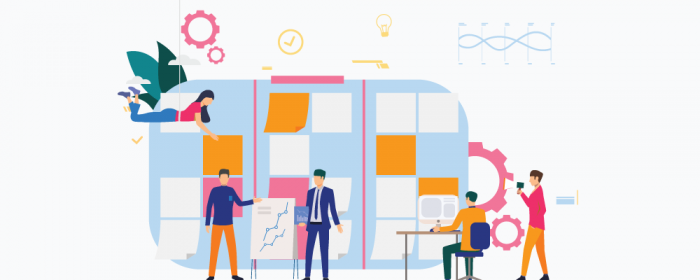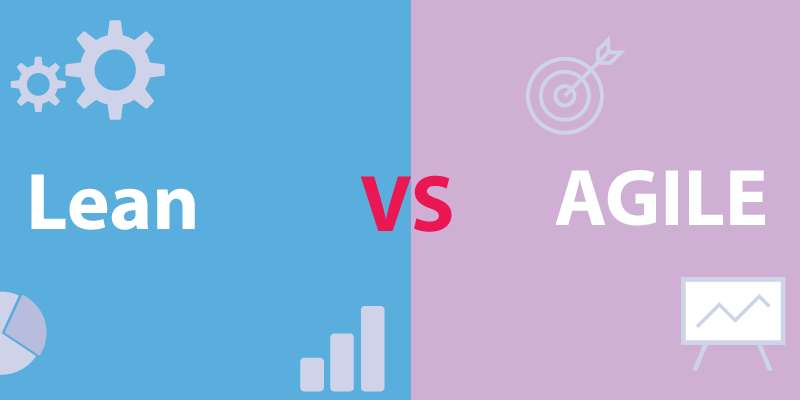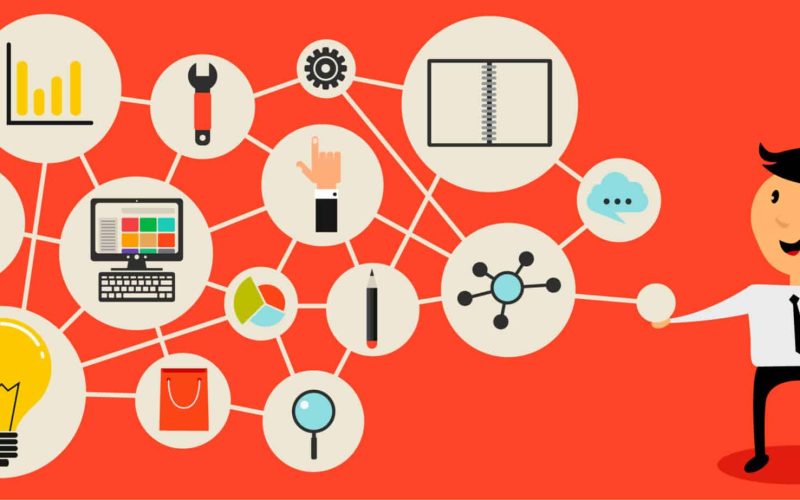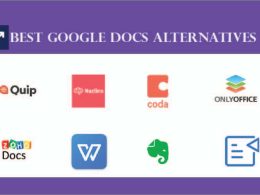You have heard about Project management, otherwise, you wouldn’t even be near this webpage right now. It is the way we manage all of the different tasks and elements related to the project development process, to make it a success.
Project management is an essential part of the organizational paradigm, so there isn’t just one way to perform different projects in the industry every single day.
These different methods to perform project management are also known as frameworks. These frameworks are many, but the ones we are interested in, in this article, are Lean and Agile.
You might have heard about them, and they are often used together for some reason, but the truth is that they can’t be further apart from each other.
So, without further ado, let’s take a deep dive into describing what Lean and Agile project management methodologies are and how are they different from one another. Let’s begin.
What is Agile Methodology?

Agile project management methodology is heard most often in the software industry because it helps projects to be developed using an iterative approach.
This iterative approach helps the development team to develop and test each iteration thoroughly so that there are no issues in the final developed version of the software.
Unlike all the other traditional project management frameworks or methodologies, the Agile approach helps the developers to break down the development cycles of all of their tasks and processes into bite-sized chunks. These chunks are known as sprints.
Most of the time, these sprints last up to 2-4 weeks, but it can also depend upon the company’s decision. These sprints are incredibly useful to make the software project development successful by also including the feedback of the end-users into the development process.
This helps in making sure that the project or the product being developed is relatable to the client, instead of being a complete dud and the users hating it later.
Now let’s talk about the Lean Project Management methodology.
What is Lean Methodology?

Lean project management is the application of lean principles to the practice of project management to make sure that the value of the project is maximized while minimizing the waste associated with it.
The Lean project management methodology depends on these 7 critical principles. They are:
- Eliminating waste
- Build quality in a controlled way
- Creating documentation
- Deferring commitment
- Delivering fast
- Respecting people
- Optimizing the whole project development process
You might be wondering what this waste is supposed to be, so, let’s talk about it.
Lean project management methodology identifies three different types of waste. They are:
- Muda: This is the type of waste that consumes the resources associated with the project development process without providing any real additional value to the whole program.
- Muri: This is the type of waste that refers to the overuse of different resources like employees and the company equipment.
- Mura: This waste is known as “operational un-evenness”. This decreases the productivity and efficiency of the overall operation in the long term.
What are the differences between Agile and Lean Methodologies?
Now that we know about the main features of the Agile and the Lean project management methodologies, let’s take a look at some of the key differences and find out how they are different from one another.
Here are some of the differences that we are going to take a look at in this article.
- Differences in the Approach
- Differences in the Project Timelines
- Differences in the Project Team
- Differences in the Overall Goal
- Differences in the Area of Focus
Let’s begin.
1. Differences in the Approach
While both of these methodologies are excellent in their approach to development, here is how they differ from one another.
Agile Approach
In the Agile approach to project management, a project or a product is worked on in very short and incremental cycles called sprints. These sprints break down the project into different phases and each of these phases consists of planning, development, testing, and evaluation.
All of these processes are performed in every sprint so that the desired product is achieved and not something that will fail after 2 days.
Lean Approach
The Lean approach to project management aims to make sure that the manufacturing process has small incremental changes to increase efficiency. This approach and lean assessments can often cause the development cycles to be even shorter than usual, but these changes are not the core focus of this methodology.
2. Differences in Project Timelines
While both of the methodologies, Agile and Lean, aim to make sure that the project is delivered on time, their project timelines are quite different. Here’s how.
Agile Timeline
A scrum team or an agile project development team often works in short development cycles to make sure that the software is delivered quickly and efficiently. Each of these cycles or sprints typically lasts for two to four weeks.
Lean Timeline
The Lean project development teams shorten their project development timeline by optimizing the process flow. The main difference between the two is that there is no specified time frame in the Lean project management methodology.
3. Differences in the Project Team
The Agile and the Lean methodologies follow different team structures.
Agile Project Development Team
An Agile project development team is an incredibly self-organized team of individuals that are smaller in number but they are amazing when it comes to cross-functional professionalism.
This incredible team is self-organized as they decide how they are going to work, by themselves, and without any outside intervention.
This team is also cross-functional as all of the team members have many different areas of expertise, which helps the team in moving forward towards a common goal.
Lean Project Development Team
In the Lean project development team. There are multiple assortments of members from all over the company. These are all relevant team members from relevant departments to ensure that the whole development process goes smoothly.
4. Differences in the Overall Goal
Both of these incredible project management methodologies strive to achieve different goals through their strategies.
Agile Goal
In the Agile project management methodology, the goal is to make sure that the company creates something incredible that is relatable to the end-user or the stakeholder requirements that were discussed at the start of the project.
Lean Goal
The goal of the Lean project management methodology is to make sure that the process eliminates any tasks or processes from the project development process that do not add any value to the overall product development process.
5. Differences in the Area of Focus
Here is how the different project methodologies differ from each other based on Area of focus.
Agile Area of Focus
The core focus of the Agile project management methodology is the project scope and customer value.
This scope of the project refers to all of the functionalities and features that the product has to offer. Customer value is the input of the end-user, which helps to make the product more relatable.
Lean Area of Focus
The Lean project management methodology’s focus is all on improving the quality and process flow of the whole development system.
But enough about the difference, let’s see how they are similar to one another.
Similarities between Agile and Lean Project Management Methodologies

Here are some incredible similarities between these amazing methodologies.
- Both of these methodologies focus on the regular inspection of the tasks and processes that are happening in the project development process. This helps to make sure that the development process is going effectively and without any hurdles.
- Both of these methodologies make sure that there is proper involvement of the customers and the stakeholders associated with the overall project development process. This helps to make sure that the end product is relatable to the client and it is not a dud.
- Both of the methodologies have quite efficient timelines to ensure that the development team has enough time and space to complete their work.
- This helps to make sure that the team is not overwhelmed with everything that they have to do so that they can finish the work in as little time as possible.
- Both of these methodologies have incredible strategies to make sure that there is a constant flow of results about the over-development process. This helps to make sure that the product is developed properly and there are no empty spaces to fill in later.
Conclusion
This was our guide regarding Lean vs. Agile. It is important to note that there is not one perfect methodology for everyone working in the organizational paradigm. It depends on the project.
So, just make sure that you do your research and find the best possible project management methodology for you so that it can help you perform your work quickly and efficiently.
If you think that we mentioned something incorrectly then contact us and we will get back to you as soon as possible.
More Readings:
















